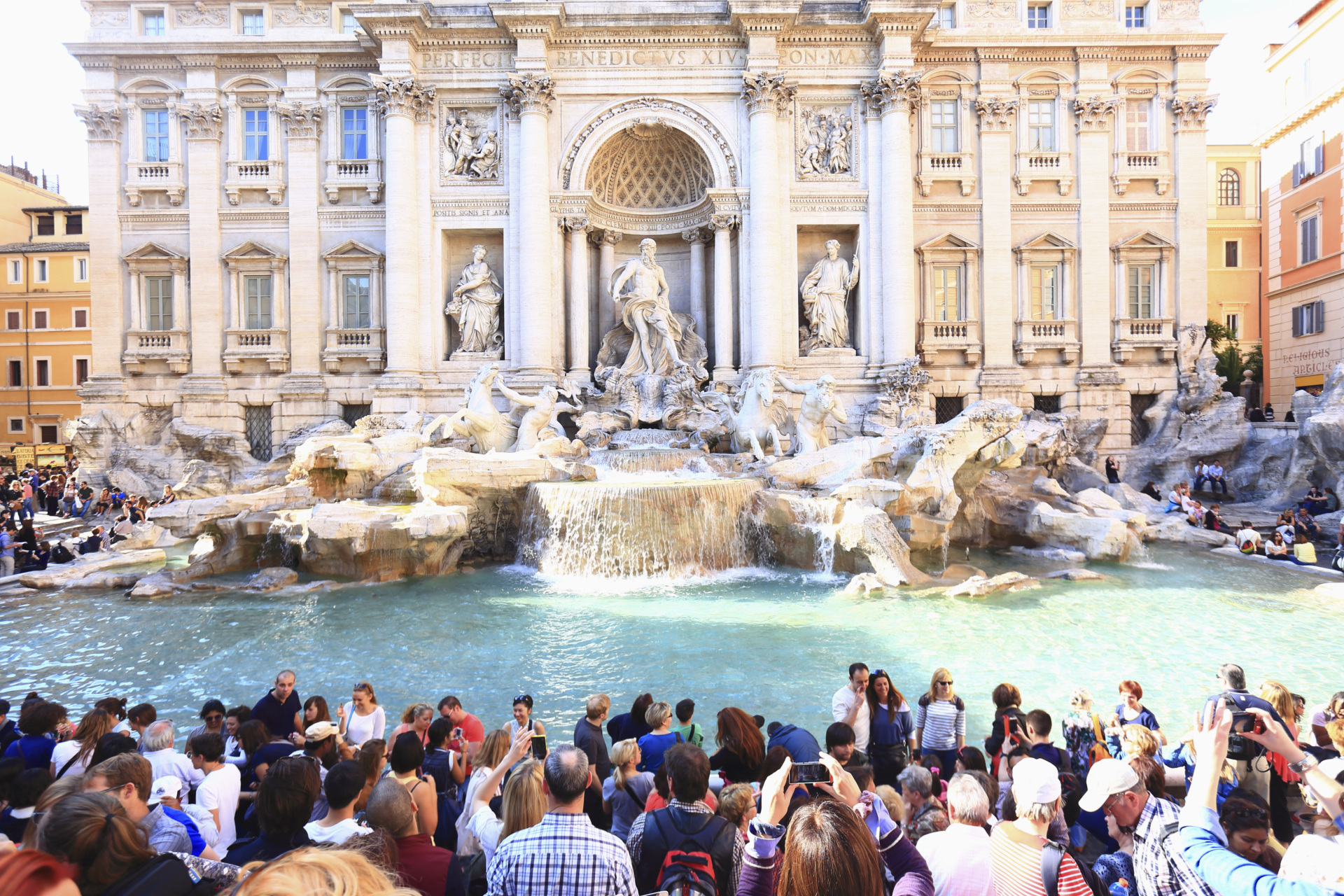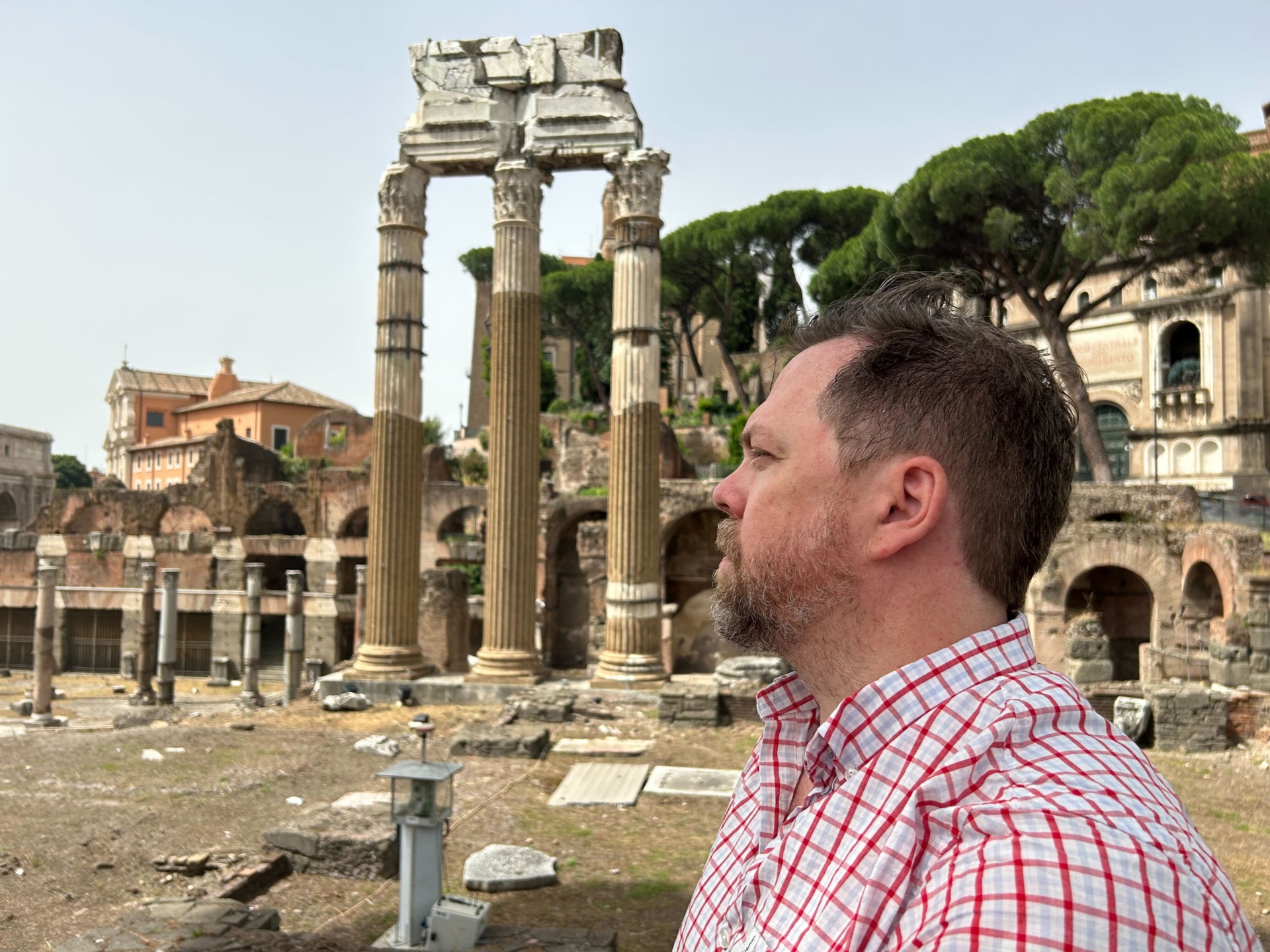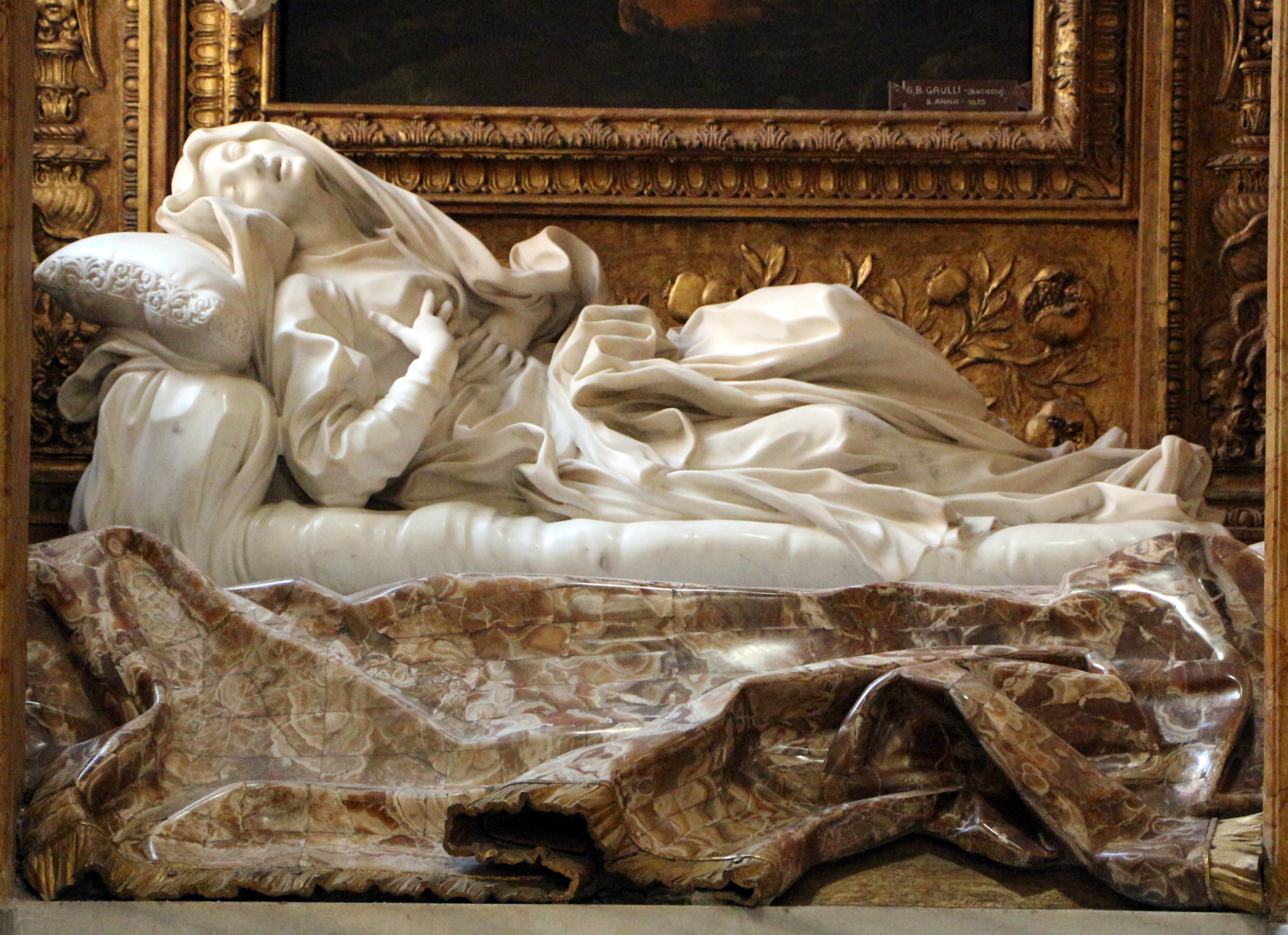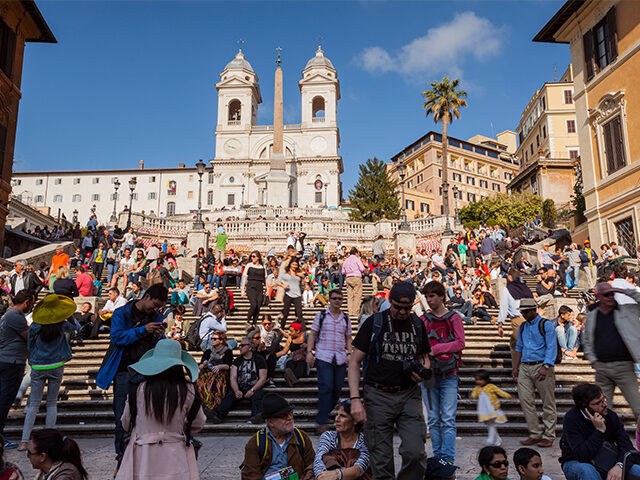No Room at the Beach
On a recent Saturday afternoon in the Italian Riviera, a young woman named Ludovica was working as a waitress at a beachside bar in Cinque Terre.
The beach itself belongs to the hotel up on the boardwalk. Entrance to the beach is reserved for hotel guests and those willing to shell out forty euros for a pair of beach chairs beneath an umbrella. Drinks and food are definitely not included in the price tag.
“It’s too busy, all the time,” Ludovica said when asked whether she enjoyed her job. “I love it, but it’s always busy.”

The beach in Monterosso al Mare, Italy. (Getty Images)
The beach was full—completo—before 10 in the morning. No further chairs or umbrellas could be had at any price. There was a small public beach down the shore, squeezed between two different private affairs, but there was no room there either.
It is clear that the tourist economy in Italy is booming. Dinner reservations at expensive restaurants in Rome are booked weeks in advance. Securing a place for an aperitif at a piazza requires extreme levels of patience. The crowds make the square before the famous Trevi fountain nearly impassable. The lines outside the Duomo or the Uffizi in Florence stretch on for hours.

The Trevi fountain, Rome. (Getty Images)
It was not that long ago that the pandemic threw major parts of the Italian economy into a crisis. Prior to the pandemic, tourism accounted for around 13 percent of Italy’s gross domestic product. The lockdowns saw the contribution of tourism vanish—with some wondering if it would ever recover. As recently as last year, tourism’s contribution was just nine percent.
Italy’s New ‘Oil Boom’
Tourism is so important to Italy’s economy that it has been described as “Italy’s oil” by so many politicians that the phrase is a cliché. It creates jobs, generates investment, and injects foreign cash into the economy. The economies and public sector finances of cities like Venice and Florence were highly dependent on tourism before the pandemic and suffered mightily during the recent plague.
Cinque Terra, where Ludovica was serving drinks, was nearly deserted in 2020. The recovery is more than complete, judging by hotel and restaurant occupancy. A recent stroll down the boardwalk revealed no vacancies at any hotel in Monterosso (the biggest of the coastal towns that make up the resort area), endless lines for gelato, and long waits for tables at mealtimes.
Not a small portion of this is due to traveling Americans. Although airfares are high and flights fully-booked, the relatively strong dollar makes Europe an attractive vacation destination for many Americans. Full employment in the U.S. means that many families can afford vacations—and many still have excess savings and pent up desire for travel leftover from the pandemic lockdowns.

John Carney at the Roman Forum.
Christine Lagarde, the president of the European Central Bank, described Europe’s economy as stagnating but not in a recession. The manufacturing sector is in a deep slump. But compared with forecasts from a year ago, Europe is doing very well. Ludovica’s problem—too much demand—appears to be widespread in the touristy parts of Italy, helping keep the economy afloat.
Ludovica said she is named for Saint Ludovica Albertoni, known in sixteenth-century Rome as “the mother of the poor.” She is the subject of a beautiful marble sculpture by Gian Lorenzo Bernini located in the Church of San Francesco a Ripa in Trastevere, across the Tiber from the rest of Rome. She was known for her ecstatic experiences, including the occasional levitation, which makes her a fitting icon for the tourist economy of Italy right now.

Gian Lorenzo Bernini’s statue “Blessed Ludovica Albertoni” in the Paluzzi-Albertoni chapel of San Francesco a Ripa church in Rome. (Wikimedia Commons)
If you do venture to Trastevere for a visit to Bernini’s sculpture be sure to leave plenty of time for dinner. The most popular restaurants have waits of up to an hour for dinner.
Always Busy=Persistent Inflation
The downside of the resurgence in Italy’s tourism sector is likely to be persistent inflation. The most recent figures released Wednesday show that consumer prices were up 6.7 percent from a year earlier. That’s better than May’s increase of eight percent, but this was largely due to falling utility and transportation prices rather than a weakening of underlying inflationary pressures.
On Friday, we will get data for the broader Eurozone. While inflation is expected to fall in Spain, it might accelerate in Germany. The Italian numbers suggest inflation is likely to remain much too high for the comfort of the European Central Bank, meaning more rate hikes will be coming.

COMMENTS
Please let us know if you're having issues with commenting.